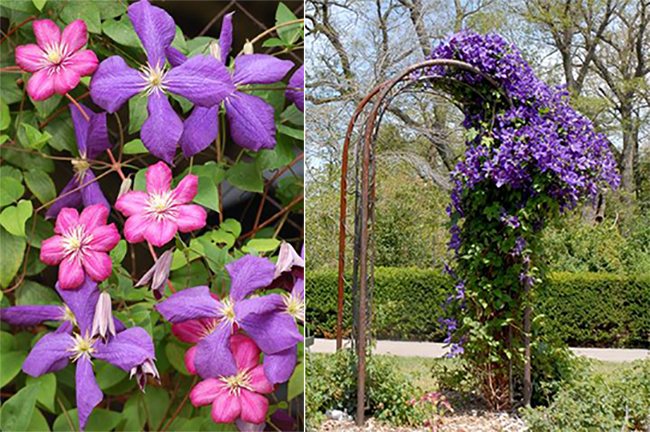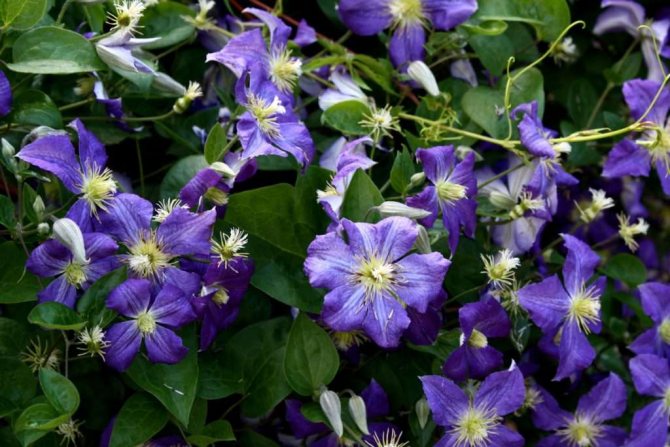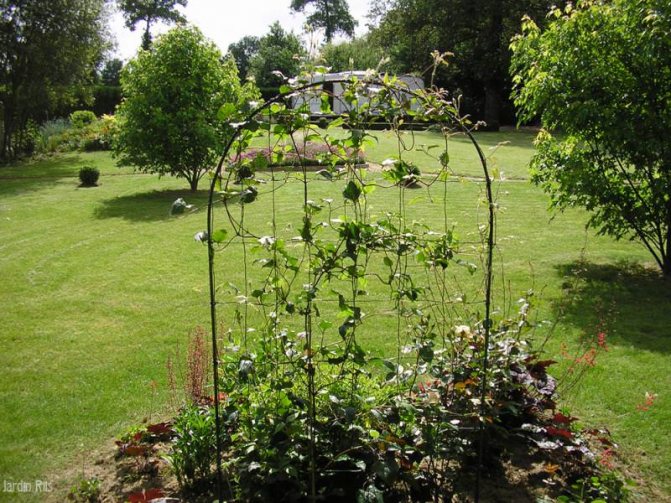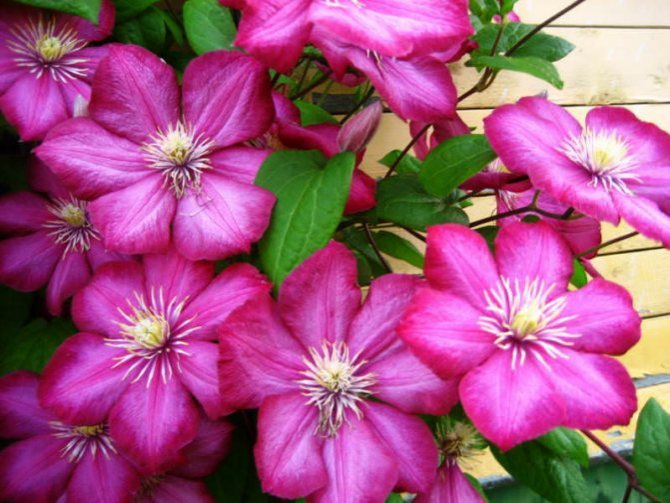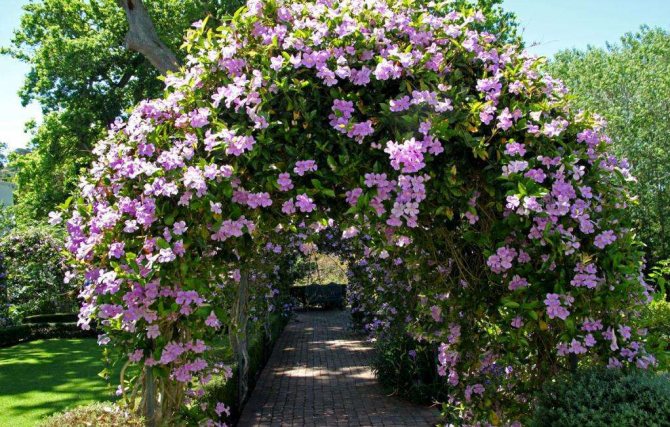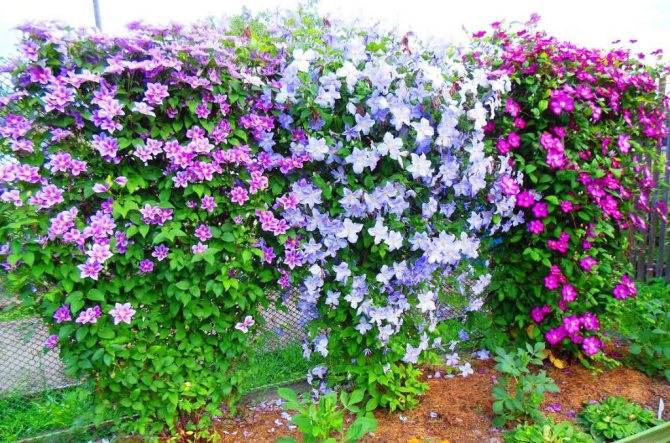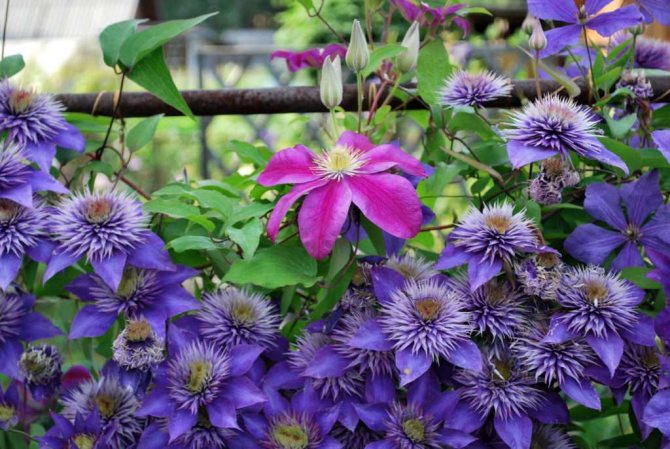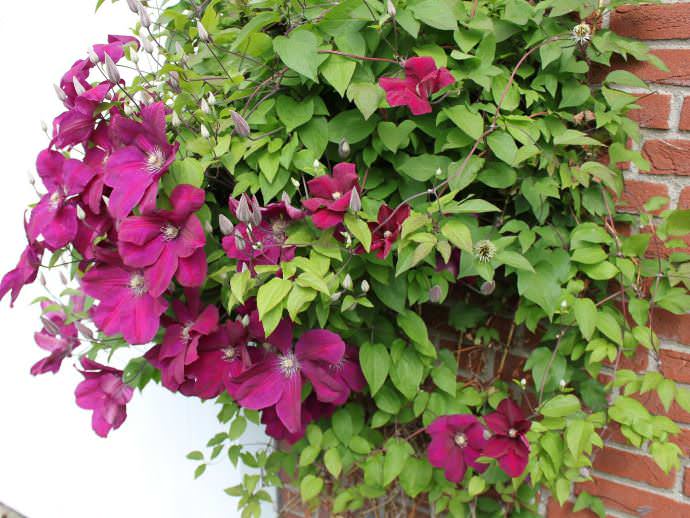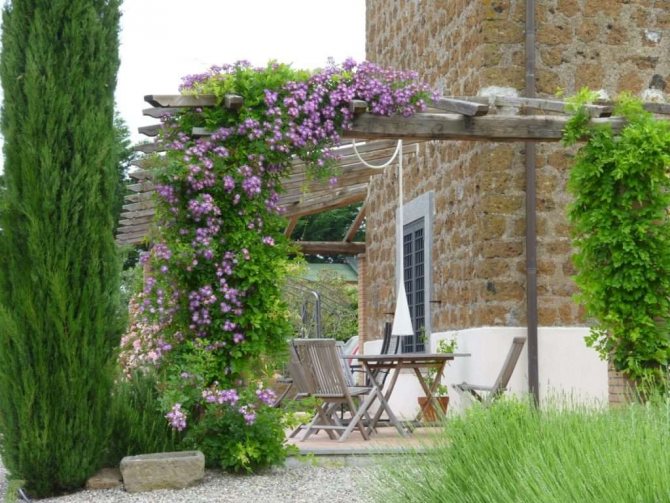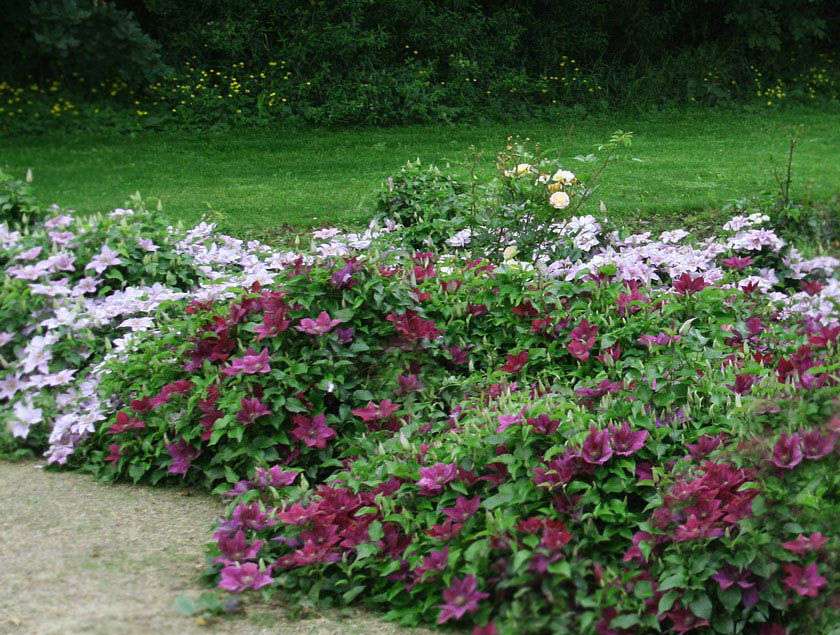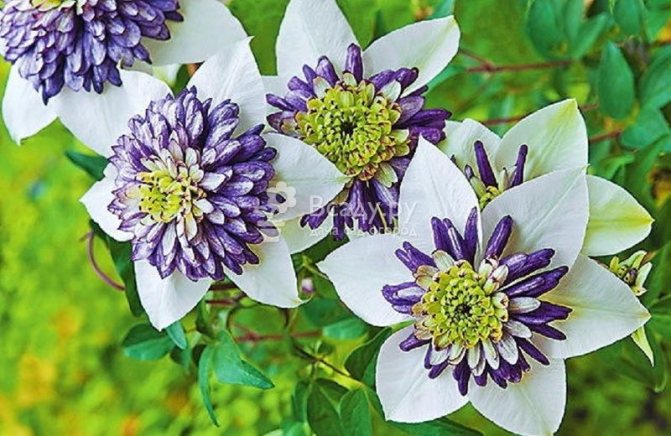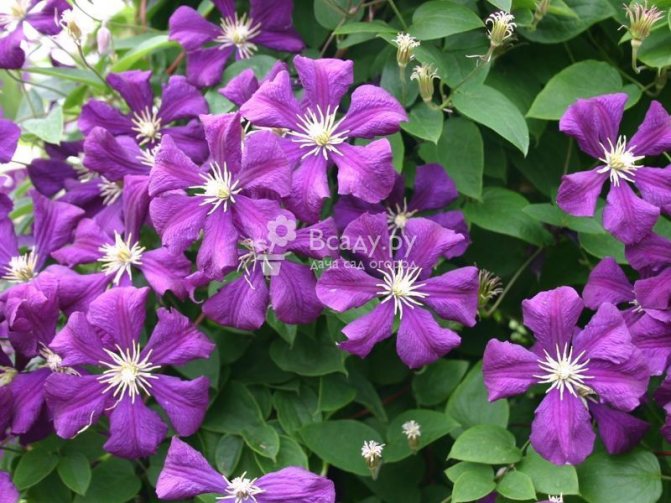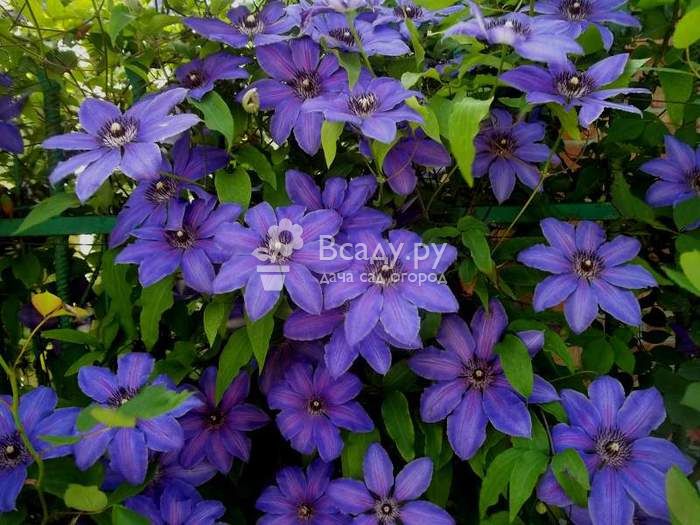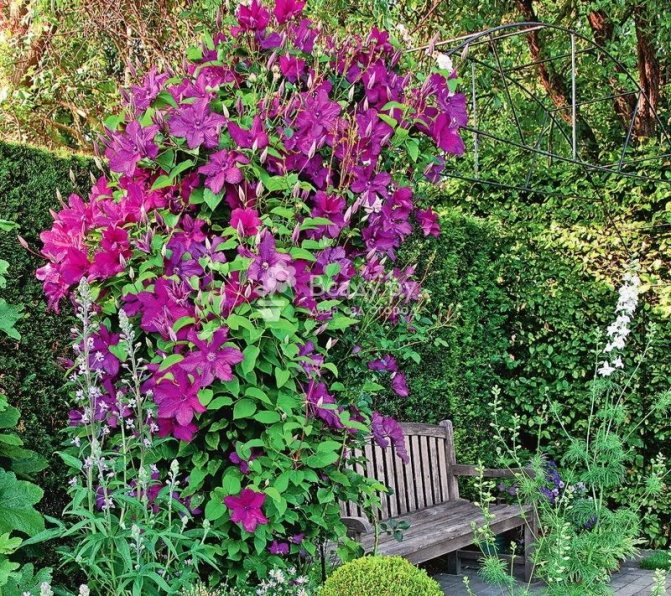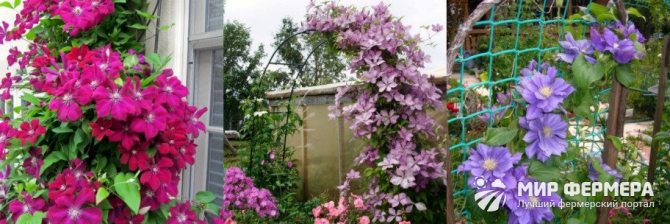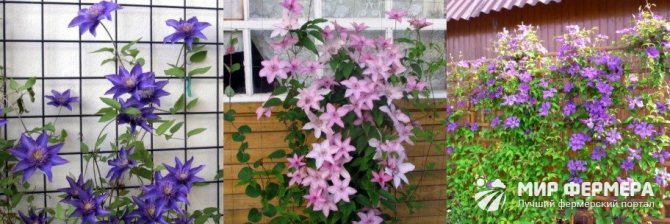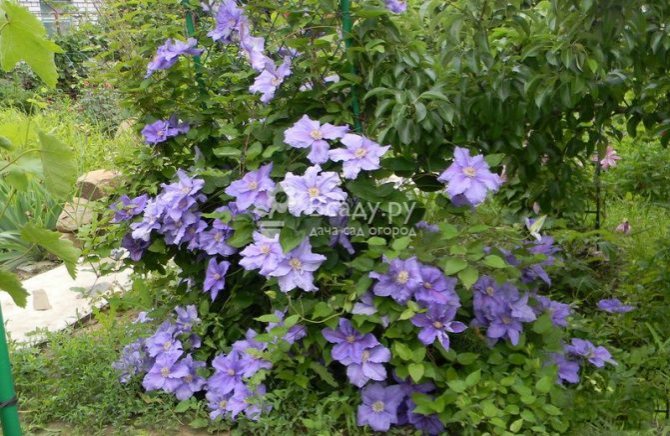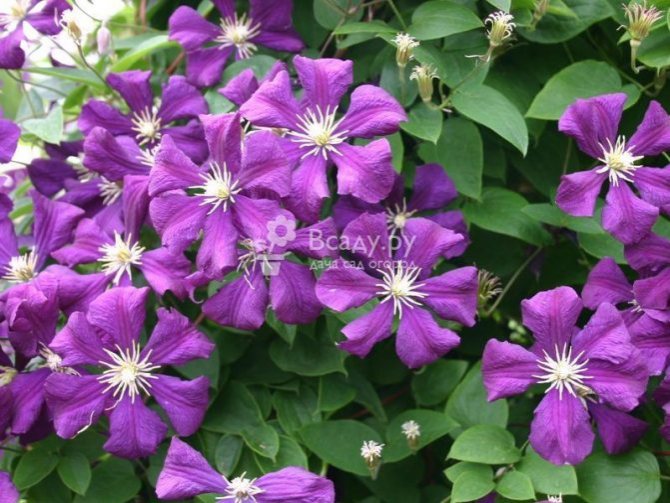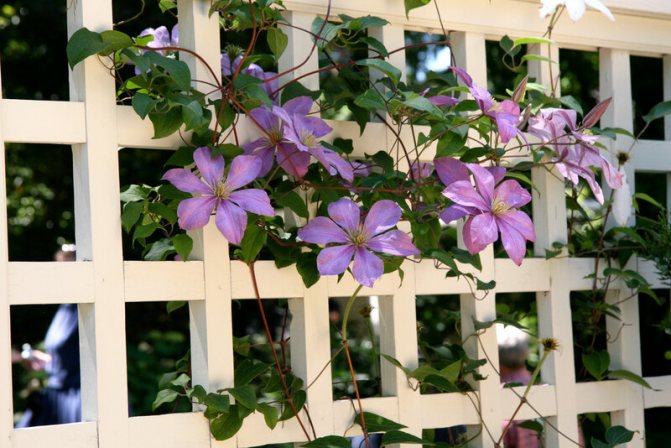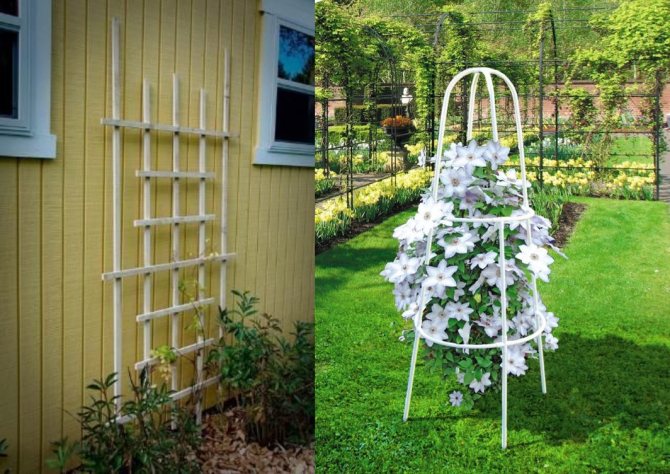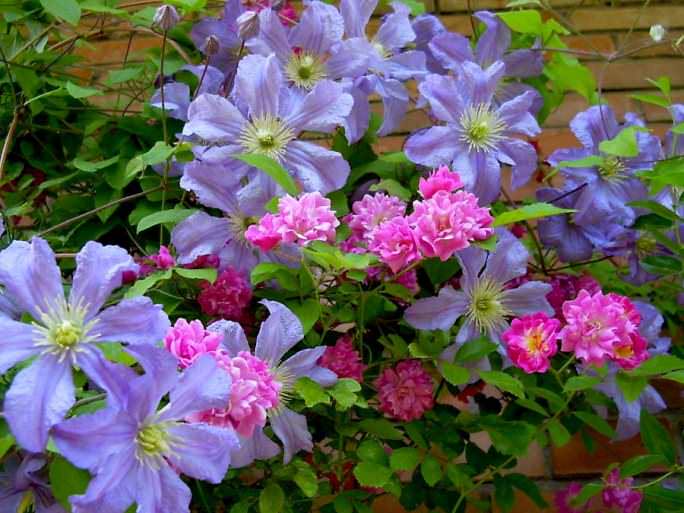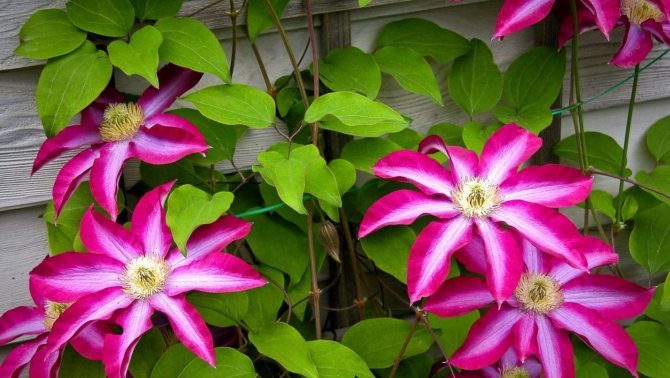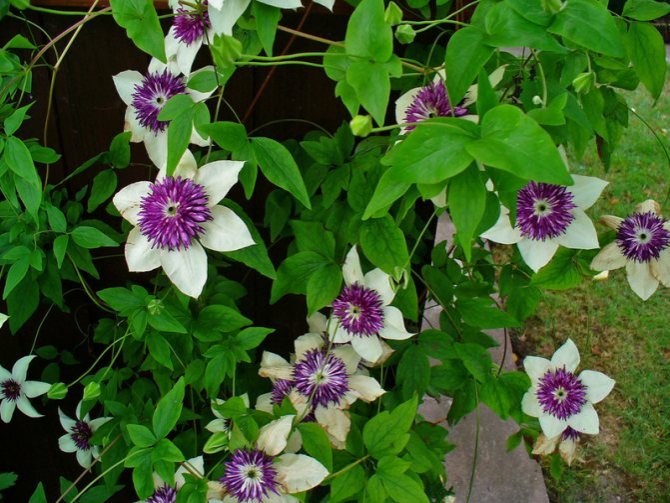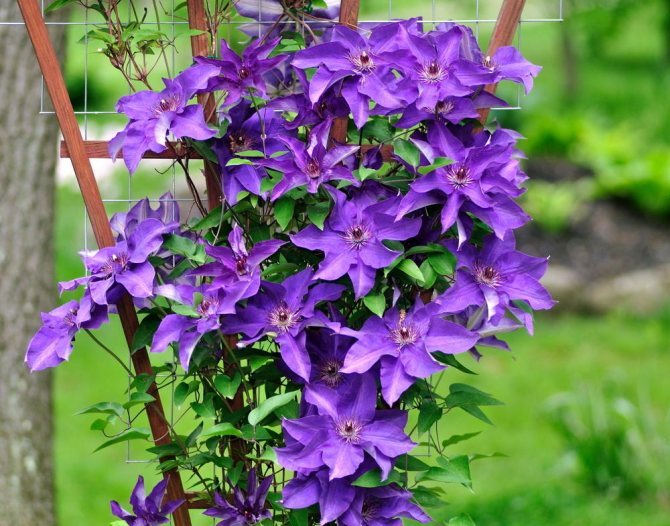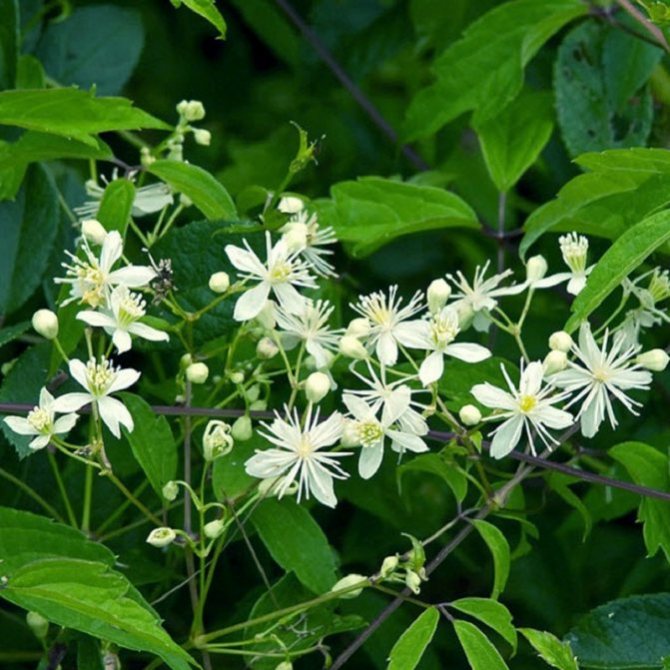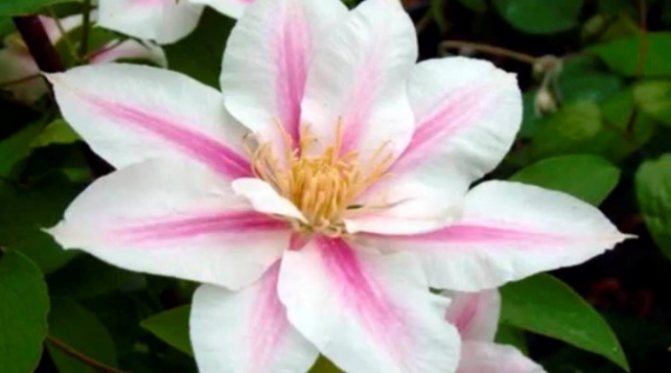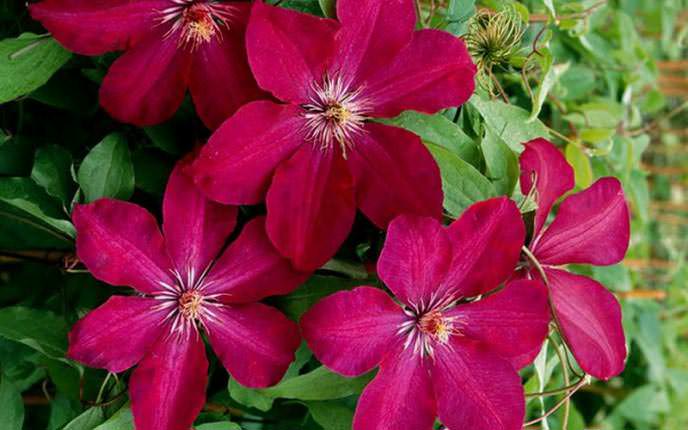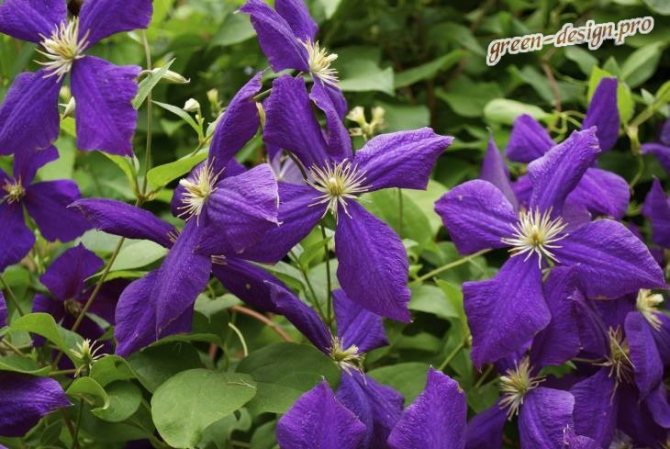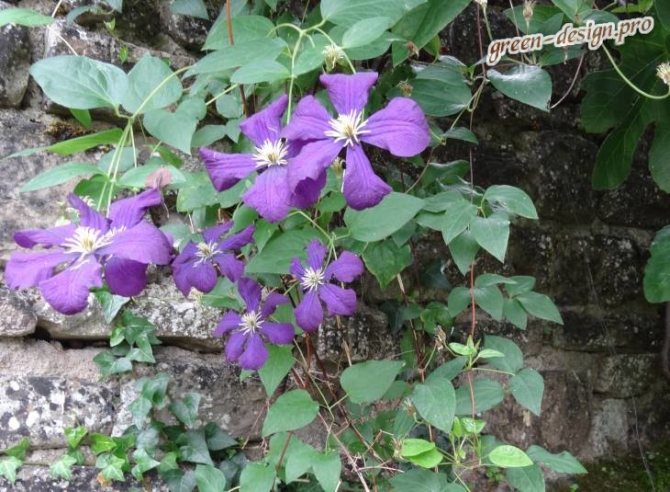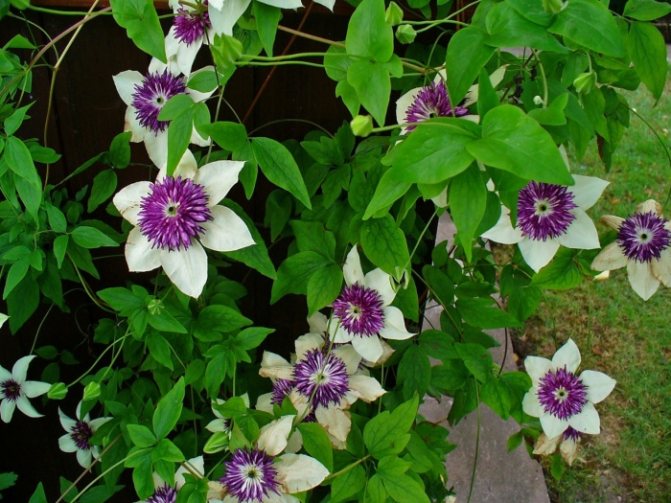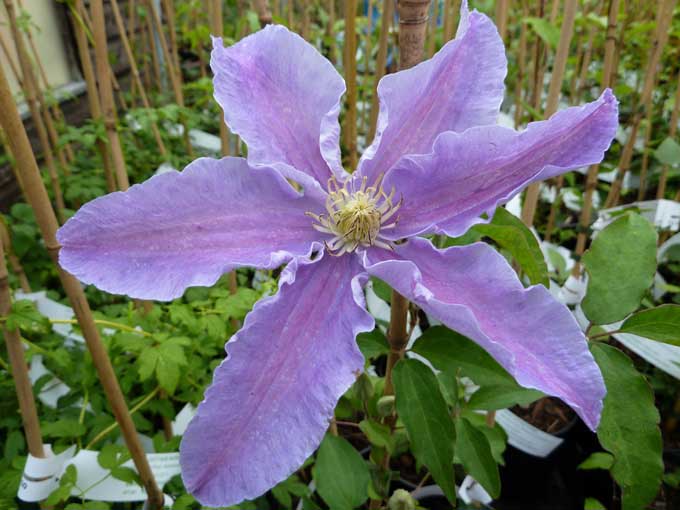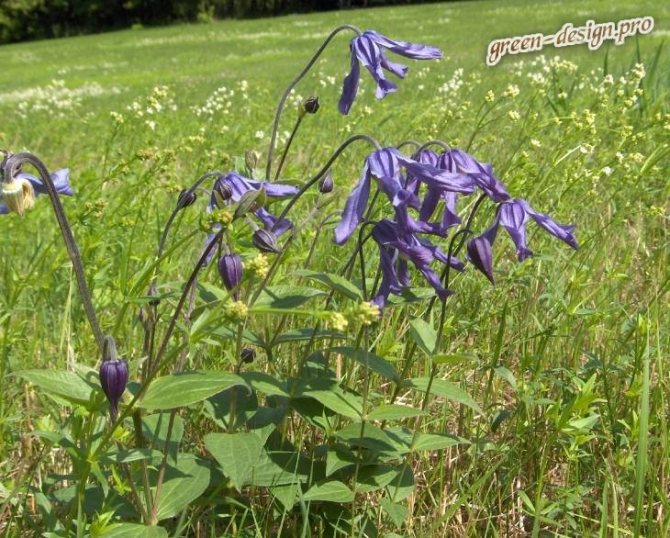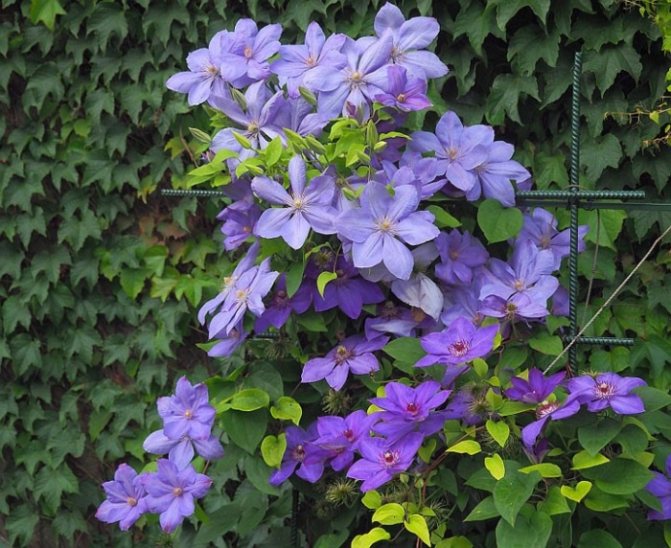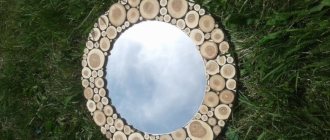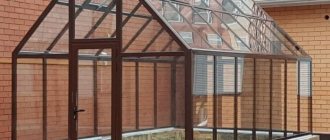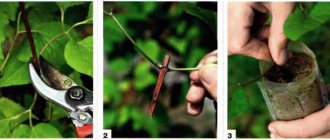Clematis are very beautiful climbing plants that are simply irresistible during flowering. However, there are some points that are important to observe in order for clematis to perform its decorative functions. One of these whims is the need for sufficient sunlight. However, the root system should be in the shade. In addition, the vine will look beautiful only when it is directed to the vertical support. If you let the development of the bush take its course, the stems will intertwine, and the plant will die. In addition, vertical hedges (vertical support) are an excellent and fashionable solution in landscape design. With such vertical gardening, you can make the zoning of the site, you can hide some inconspicuous corners and, conversely, add a zest to any composition, so the choice of support must be approached thoroughly.
Further in the article, we will talk about which supports are better to choose, where to get them and what the material of construction should be.
What to do if clematis does not bloom
If you follow all the recommendations, but your clematis has not bloomed for three years, you should transplant the plant. In a prepared pit (at least 70 cm deep), it is imperative to add half a glass of superphosphate and a bucket of humus.
The plant, together with a lump of earth on the rhizome, is moved into the hole, sprinkled with soil and watered abundantly. To shade the roots, you can plant peonies on the south side. After transplanting, clematis should be watered regularly.
To preserve the decorative effect of clematis, do not forget to carry out prophylaxis against pests and diseases.
Metal arch
The structure made of metal is stronger, more reliable and durable. There is no need to be afraid that the support will break under the weight of the plant or rot during the winter under the snow. It is also necessary to process the metal structure and paint it so that rust does not appear. A well-groomed metal support will last a very long time, performing a supporting function not only for clematis, but also for other plants.
Currently, you can see all kinds of art forging products on sale. However, the cost of such a design would be very high. A more economical option is prefabricated frames, but they will be less durable.
If you know how to use a welding machine, then it will not be difficult for you to independently make a beautiful metal shape for clematis. If there is no welding machine, then you can also build a metal structure made of metal using duralumin pipes and a metal mesh.
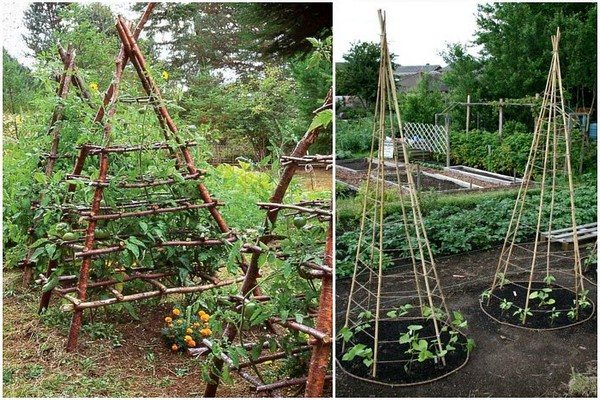
Dural pipes should be bent into an arch using special tools. Then, using screws, you need to attach the crossbars, also made of metal. The finished structure must be covered with enamel or acrylic. Then you need a mesh - a chain-link that will exceed the dimensions of the frame. Thus, the mesh is stretched, bending over the prepared supports, and fixed there. The entire structure must be anchored in the ground so that it does not fall. The depth here will be at least half a meter.
If you already have some frames left on the farm, then they can be safely used for the construction of supports, reinforced with a metal mesh.
Application in landscape design
A statistician will help you evaluate the unlimited possibilities of using attractive clematis in landscape design. According to rough data, there are 300 species of flowering plants, which differ in the shape of the stem, the period of flowering, and the color of the bud. This allows you to create unique compositions at the summer cottage.
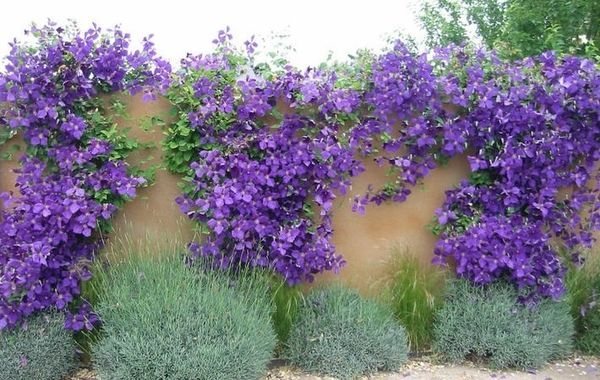

Here are the possible use cases:
- The curly liana will successfully cope with the role of a living fence. Closing the interior of the summer cottage from those around it, it will create a mesmerizing blooming carpet.
- Decoration of the walls of gazebos, open verandas and terraces. On a hot day, the thick foliage of clematis will save you from the heat and give a saving shadow.
- Arches and pergolas decoration. The popularity of decorative elements in landscape design is growing exponentially. Lightweight structures are not practical, but serve exclusively as a decoration for the suburban area. In combination with long-blooming clematis, such a structure will sparkle with new colors.


- Alpine slides are another area of application for clematis. By braiding stones, flowers will create a natural picture of wildlife, which is always highly appreciated by landscape designers.
- Sometimes the trunks of dead trees are decorated with lianas. To create the most vivid composition, different varieties of clematis are planted around the tree.
- Certain types of climbing plants are suitable for creating a background when forming flower beds and flower beds.


Types of supports for flowering clematis
Depending on the shape of the support for clematis, there are:
- Arched;
- Pyramidal;
- Fan designs.
The main requirements for them are: decorative, ease of installation and ease of use. Thanks to the support, the stems of clematis do not break or trample. With the help of vertical stands, it is possible to provide ventilation of the plants, which is the key to their rapid development and abundant flowering. The arch is the most common type of garden support for flowering plants.
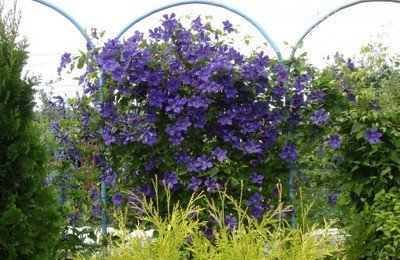

A support entwined with flowering clematis, in addition to being an elegant element for decorating any garden, helps to divide the space into separate functional zones


The arch, entwined with clematis, installed at the beginning of the path, looks just amazing. She invites you to walk along the winding paths of the garden and immerse yourself in its enchanting beauty.
Clematis also feel comfortable on pyramidal tripods made of reed, or metal or willow rods.
The material on the types of supports for climbing plants will also be useful:
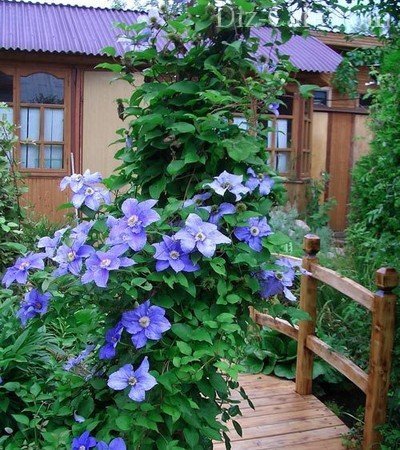

The pyramidal supports provide good support for the flexible stems of the plant. They look appropriate both in multi-tiered flower arrangements, and as a free-standing structure.
You can create a cozy romantic corner in the garden, where you can retire on a sultry afternoon or on a cool evening, hiding from the prying eyes of passers-by and enjoying the enchanting beauty, using tapestries.
Recent Entries
6 rare varieties of tomatoes in 2020 that will bring you a decent harvest 5 hybrids of cucumbers that I will plant this year without hesitation 8 budget tips for summer cottages that will save money and time
How to choose a group of clematis for growing in the garden in your area.
In order for clematis to develop normally in the climate where you live, you need to know the type or variety of clematis, or at least notice - when it blooms and on which shoots. According to the flowering period, clematis are divided into early -, medium -, and late flowering. And by the nature of flowering, clematis are divided into:
1. Blooming on the shoots of the current year; 2. Blooming on last year's shoots; 3. Blooming on last year's shoots and current year's growth.
For the northern regions of the Middle Lane, earlier - and mid-early varieties of clematis with flowering on the growth of the current year are well suited. Late flowering ones simply do not have time to bloom. For example: André Leroy, Hegley Hybrid, Cardinal Rouge, Biryuzinka and others from the Integrifolia, Jacqueman and Viticella groups. And also, especially, the princes are not afraid of winter - Alpine, Siberian, Okhotsk - these are small-flowered clematis that bloom on last year's shoots.


Features of growing a plant
Before proceeding with the story about making a support, you need to recall what clematis is. This plant possesses magnificent, abundantly green, weaving shoots, adorned with a variety of bright flowers during the flowering period. The flower exudes a subtle delicate aroma, similar to the scent of jasmine, almond. It is preferable to locate it on the site in a well-lit area, which favorably affects the abundance and duration of flowering. The flower is used for vertical gardening, which requires the creation of a special support for its stems.
You can learn more about the plant from our article "Clematis (clematis) - planting a flowering liana"
Roses and clematis in landscape design
The duet of rose and clematis is undeniably successful. For the British, such a design of the local area is considered traditional. The landscape design of an English courtyard is rarely complete without the presence of clematis in combination with a climbing rose. The flowers of royal beauty act as a support for the thin stems of the vine. The secret to a successful combination lies in identical growing conditions and care requirements.
Comment! The growth rate of clematis shoots is higher than that of a climbing rose. Therefore, after planting the royal flower, the shrub is given time to grow and get stronger, after which they complement the landscape design composition with a vine.
Sometimes flexible stems are allowed to grow horizontally in their summer cottage. Over time, they will independently braid the rose bushes. The picture looks interesting when clematis blooms at the same time as a beautiful rose. No less advantageous is the combination of faded rose bushes and bright vine inflorescences.
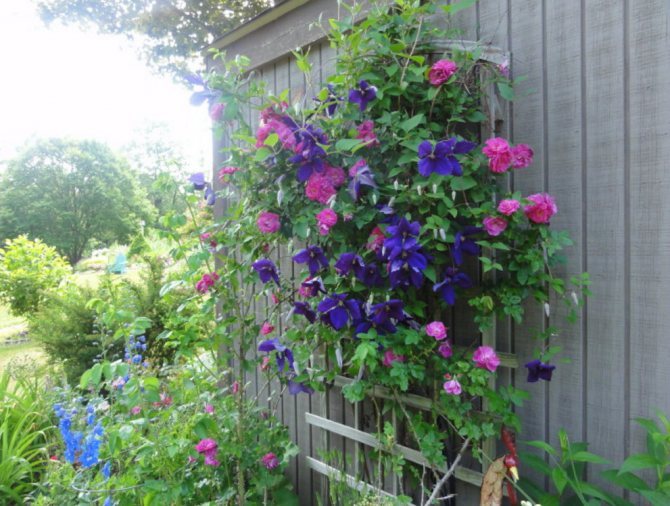

When creating a composition in landscape design using roses, take into account the following recommendations:
- Vine planting is carried out subject to good adaptation of the rose in a new place.
- Before replanting to a rose, the root system of clematis needs to be strengthened.
- When two climbing plants are planted at the same time in their summer cottage, their roots are separated by a partition.
- Curly flowers of approximately the same height and volume are selected. A slight dominance of the rose is allowed.
- The full development of plants is observed only in conditions of high-quality natural lighting.
- During planting, the clematis shoots are slightly tilted towards the central part of the rose bush.
- The composition looks most impressive in landscape design, where climbing roses are combined with a small-flowered liana.
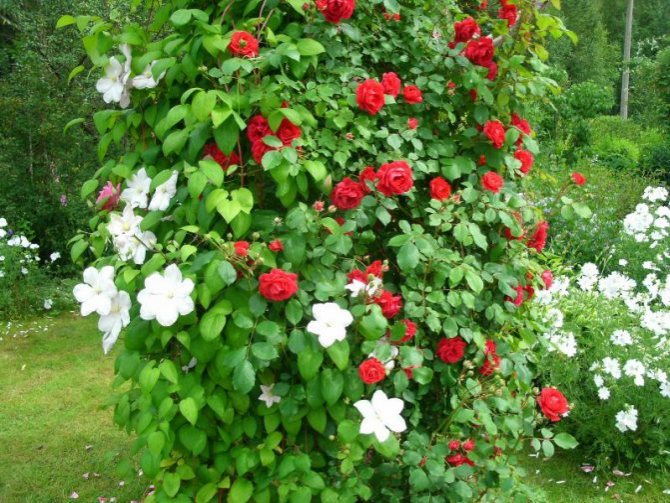

The color combination depends on the preferences of the owner of the suburban area. The palette of white roses and light blue or pink clematis buds looks exquisite. Vine varieties with purple or raspberry blossoms will help to get a vivid picture. A thorny shrub with pink flowers is complemented by a liana, which pleases with blue shades. The combination of yellow roses and bright vines buds is distinguished by originality, it can be purple, violet or blue flowers. A photo of a summer cottage will help to evaluate the beauty of clematis in landscape design:
Construction types
The easiest way to build a wooden support, since it does not require special skills and abilities. A few wooden materials will suffice, as well as a saw, hammer, and nails. If the hostess is a woman, then supports from various nets, as well as other light materials, will be in demand here.
The most professional gardeners who know how to work with metal structures and have the necessary tools at hand can build forged and other structures.
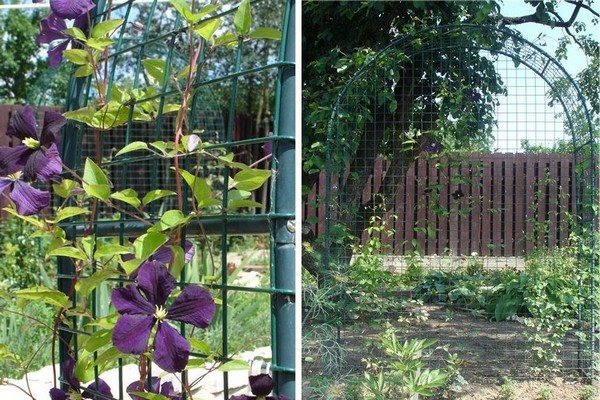

You should take care of the beauty of the structure, since the vine can completely cover it with a floral carpet only by the middle or end of summer. The rest of the time, the support should also look attractive, so it is better to paint or varnish it, or decorate it in some other way.
As for the form, it all depends on the taste and imagination of the gardener. It can be an arch, an obelisk, it can be a trellis, trellis. It can be any geometric figure: a ball, a cube, and even animal silhouettes.
Here it is important to focus specifically on the design of your site, on your personal preferences, and, of course, on the possibilities. In the absence of the possibility and desire to create separate additional supporting structures, you can use the lower branches of old trees or just old trunks or any large shrubs that do not need good sunlight as them.


Friendly neighborhood
Besides the rose, there are many other successful combination experiments. The root system of clematis needs shading. Flowers with shallow roots will cope with the task. For this purpose, the following are suitable:
- calendula;
- marigold;
- geranium;
- irises;
- phlox.
The composition of liana with hydrangea or buddlea looks interesting. Burning clematis is combined with barberry, black elderberry and fragrant acacia. Jasmine, viburnum, spirea, chubushnik, hops can become a suitable neighbor. There is also a place for a liana among the conifers of the summer cottage, in the vicinity of rose hips and lilacs.


When combining plants and planning landscape design, be sure to take into account the form of clematis growth. Flowering plants come in 4 forms:
- Liana. The most common use case. She can twine around any support.
- Shrubs and semi-shrubs. Ideal for decorating low arches above the garden path. Over time, the lower part of the trunk becomes stiff, so they are not able to decorate tall structures.
- Herbaceous perennials. Ideal for decorating a rock garden, decorating flower beds and mixborders.
Another attractive landscape design picture with clematis in the photo below:
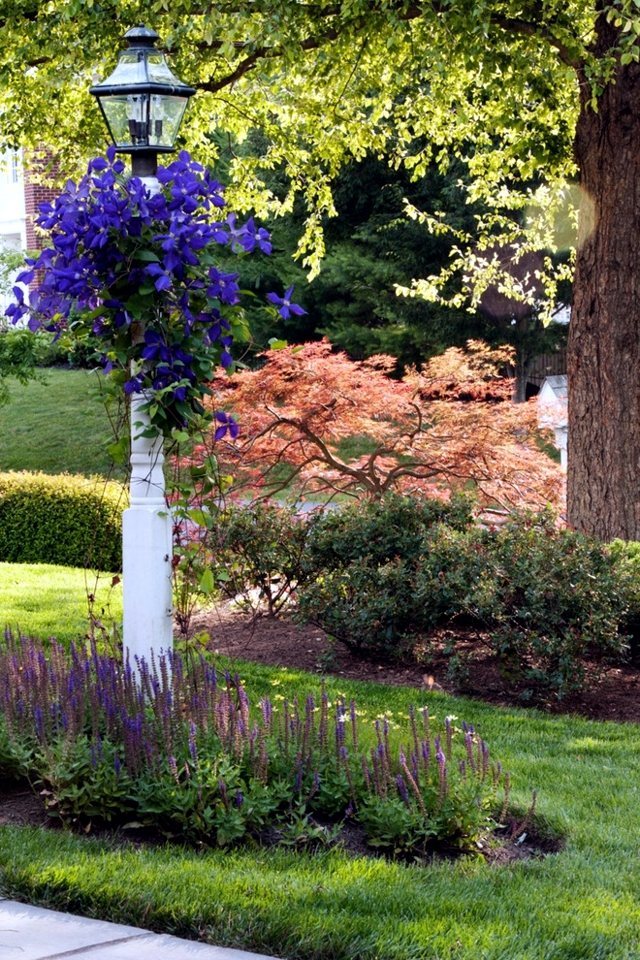

Why do you need a support for clematis
There are several ways to create a support yourself. It only takes a little time and a limited amount of readily available materials.


The support densely overgrown with clematis looks fabulous
Features of growing clematis
Clematis bushes planted in open ground can grow in one place for decades. They are transplanted only if absolutely necessary, since the procedure can only harm the widely overgrown root system of the plant.
The best places for clematis
When choosing a corner where to plant clematis in the country, it is recommended to avoid areas near large plants and trees that will interfere with the development of flower roots. Also, do not plant a bush in a place where moisture stagnates, otherwise it may die from decay and the onset of fungal diseases.
Note! A space open to the sun is most suitable. To create ideal conditions near clematis, it is worth arranging a flower bed with undersized flowers and herbs near it.
Why does clematis need support
Plants can stretch up to 4 m in length, and in some varieties up to 8 m. It is for this reason that a heavy climbing bush needs support. In addition to this function, having a support provides other positive results:
- gives clematis a great decorative effect;
- due to better air circulation, slugs and snails do not start on the flower;
- facilitates the conduct of care procedures for watering, spraying, fertilizing and pruning.
In addition, the supporting structure, entwined with clematis, opens up opportunities for the gardener's creative imagination.
Requirements for supports
There are a number of requirements that a flower stand must meet. The most important qualities that a structure should have are strength and lightness. Therefore, preference is usually given to supports made of wood or metal reinforcement. Sometimes a chain-link mesh is also used. The most comfortable coasters are created from these materials.
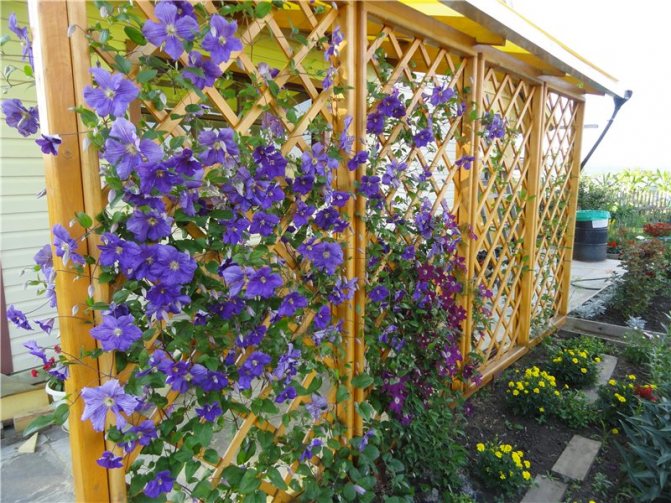

The structure must withstand powerful overgrown vines
Varieties and types
It is the variety of life forms and varieties that makes it possible to create a unique picture of landscape design at the summer cottage. The fact that clematis is in the form of a liana, a shrub, a shrub and a herbaceous plant was mentioned earlier. The structure of flowers also differs, there are the following types of inflorescences:
- simple, with one circle of sepals, are most widespread;
- in the presence of 2-3 circles, the flower is referred to as semi-double;
- Terry specimens have over 3 sepal circles.


The classification of clematis by type is carried out taking into account the closest relative on the maternal side. Based on this criterion, there are the following types of plants:
- Jacqueman. Liana up to 4 m long has a developed and strong root system. The shade of the buds - purple, purple or blue, grows singly or are located on the stem in groups of 3-4 pieces. The flowers are very large, reaching a diameter of 20 cm.
- Florida. It grows in length up to 3 m. If the task is to add light colors to the landscape design in May-June, then "Florida" is optimal for these purposes.
- Viticella. The suburban area will be decorated with a liana about 3 m long with flowers of red shades. They can be purple, pink, or crimson.
- Lanuginoza is characterized by a shorter liana length, it grows no more than 2.5 m.At the end of spring, the landscape design will illuminate with white or blue buds, sometimes in the middle of summer, repeated flowering is observed.
- Patens. Decorates the suburban area with flowering twice. Flowers of violet shades have an original star shape.
- Integrifolia. In shape, it resembles a bush no higher than 1.5 m. It will add color to landscape design in the middle of summer.
- Small-flowered. Flowering begins earlier than other species, vines are strewn with small flowers no more than 4 cm in diameter.
Look at the photo, how various forms clematis takes in landscape design:
Wall trellis
This option will be more difficult, since here you will need not only wooden slats, bars and boards, but also a hammer and nails, since the trellis will need to be nailed to the wall of a house or other building. But such a support will look more decorative, and besides, the structure is available for manufacturing even for a beginner.
It is important to choose beautiful and identical slats so that they do not look too bulky. Better if they are 40mm by 10mm. Wooden lathing can be of absolutely any shape. It can be a fan, and a rectangle, and a multi-tiered structure, and it can also be in the form of a grid and lattice.
The size between the horizontal and vertical beams here will be at least 5 cm. This is necessary so that the air circulates freely inside the entire plant, and also so that leaves and flowers can freely pass through the grate. It should be noted that the maximum cell size should be no more than 20 cm, since it will be necessary to tie up the newly growing stems and leaves. Also, the antennae themselves should reach the support.
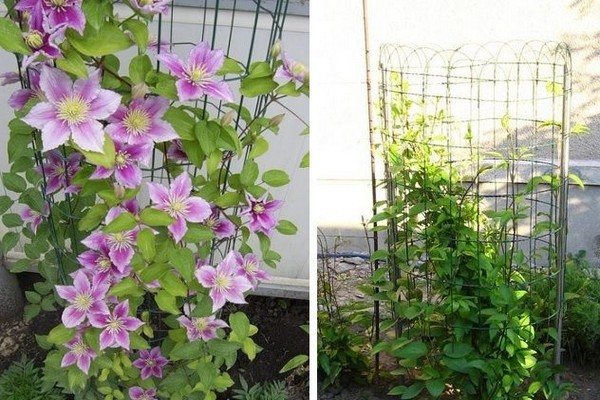

How to plant clematis? Some helpful tips
It is no coincidence that clematis is of great interest to many flower growers. The catalog of these plants is huge. Many people like these vines because they bloom profusely from June to September.Such varieties include Elegy, Viola, Blue Angel, Ernst Markham and Gypsy Queen. At the same time, up to several hundred flowers with a diameter of up to twenty centimeters can bloom on the liana.
When and how to plant clematis?
Clematis should be planted in a permanent place in autumn or spring. In the autumn period, it is necessary to take into account the fact that the plant must take root before the onset of frost. When planting in spring, pay attention to the temperature regime. After all, night frosts can negatively affect clematis. It is recommended to make planting pits large, about 60 centimeters deep and the same in diameter. It is advisable to make a drainage layer about 10-15 centimeters thick. Use gravel or broken brick for this. When planting, it is better to spread the roots over the soil covered with a mound. Many people make a similar mound from a mixture of sand and earth, and sprinkle the root collar of the plant with sand. Such a measure is able to prevent clematis from rotting, as well as to protect against overheating of the root system in summer and freezing in winter.
Support requirements
When choosing, you need to pay attention to the height of the vines and the pruning group. The characteristics of the soil are also important, as the structure must be strong enough to support the weight of an adult plant. It is recommended to use as materials for manufacturing:
- lattices made of wood or metal;
- stairs and arches;
- any nets;
- trees;
- pillars.
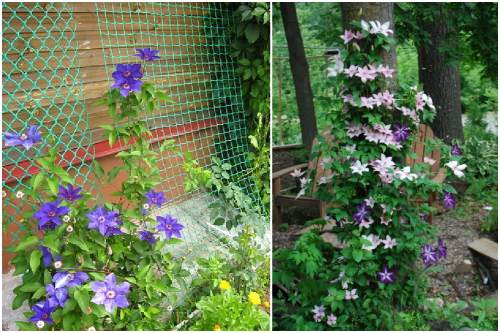

Structures made of wood or metal have a long service life, and are also resistant to wind and other bad weather conditions. Supports can be used to decorate windows, walkways or doors.
Growing conditions
It is not only the masters of landscape design that have the opportunity to decorate the suburban area. Beginners should pay attention to undemanding cultures when decorating. Clematis is a relatively unpretentious perennial plant and will become a worthy element of landscape design. Usually he adapts to any conditions, with the exception of summer cottages with highly moistened soil. On the swampy soil, the roots of the creeper die. Therefore, a high-quality drainage layer is a prerequisite when choosing clematis as an element of landscape design. Preference for planting in a summer cottage is given to sunny places, but the semi-shaded area is also suitable for growing.


Periodic fertilization, regular watering and weeding are needed for clematis, like any other ornamental crop. The volume of water depends on the height of the vine and the degree of development of the root system. Young shoots need 10 liters, an adult clematis bush needs up to 5 buckets. Moisturizing the soil to a depth of 0.5 m serves as a guideline. It is impossible to pour water directly under the root.
Comment! Dropping foliage and rare flowering are evidence of improper care.
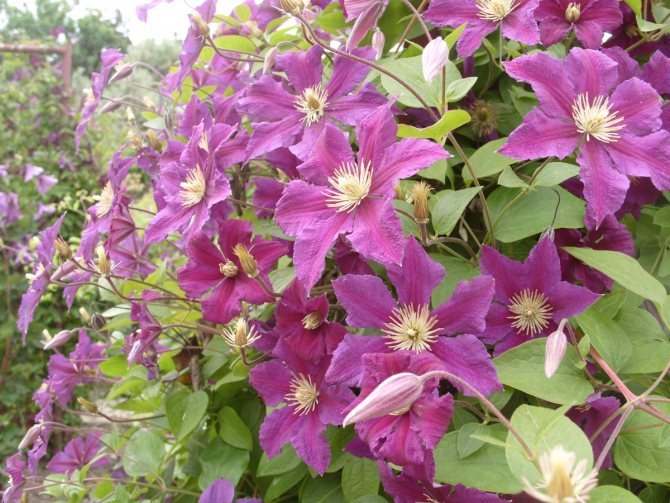

So that the efforts to decorate landscape design are not wasted, it is important to strictly observe the conditions of clematis agricultural technology. Urea is used as fertilizer in spring. Before flowering, top dressing is organized with peat, compost or manure. Regular spraying contributes to the lush flowering of clematis in the summer cottage. Pruning is carried out in the fall before the first bud. Sometimes the procedure is organized earlier if there is a need to remove damaged areas. Timely procedure ensures active growth of new shoots in spring. Clematis is propagated by cuttings or dividing the uterine bush.
Clematis, which is represented by many varieties and types, will help to organize a unique landscape design at the summer cottage. Choosing a suitable plot and neighbors for an ornamental plant, ensuring timely and competent care are the key conditions for obtaining an exquisite composition in the landscape design of a summer cottage.
Recommended entries
Perennial unpretentious flowers for giving Mixborders of perennials in landscape design
Decorative border for flower beds
Do-it-yourself outdoor flowerpots for flowers
The use of astilba in landscape design
Crafts for the garden from bottles
The first method is a trellis made of scrap materials
Consider what materials are needed to make a support:
- 4 high poles,
- vine,
- ax,
- twine.


In the photo, a diagram of a metal pergola
Stages of making do-it-yourself support for clematis:
- First, we sharpen the ends of the poles prepared in advance and stick them into the ground, trying to set them vertically.
- Then you should intertwine branches, for example, vines, creating a circle.
- We press the ring of such branches as tightly as possible to the poles.
- It is necessary to make 2 similar rings, if the trellis for clematis is like a vase, then the rings must be made of different diameters.
- Then we determine how the rings will be located and, if necessary, cut off the upper parts of the poles.
- Next, you need to fix the rings with your own hands by means of twine, preventing them from moving later.
- The horizontal type of weave must be made from a small length of branches, fixing their ends in rings. If, according to your idea, a support for clematis is required high enough, you will have to increase the structure by adding additional rings.
Trellis making video
Types of support structures
To understand how to make a support for clematis with your own hands, you need to study several options for these structures. Each type of support has its own advantages.
- To more demanding and difficult to manufacture are metal supports for clematis. Indeed, in their manufacture, skills are required to work with a welding machine.
- Wooden trellises or mesh stands are an alternative option for those people who do not know how to work with metal.
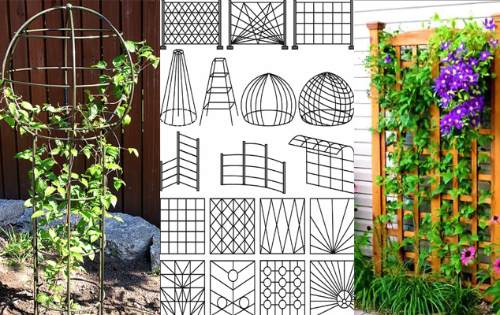

There are several popular types of clematis supports.
Metal grid
It serves for a long time and is distinguished by its reliability. You can make a trellis from reinforcement and mesh. Wooden blocks can also become the main material. The garter to such a support must be fanned out so that the flowers of the plant are evenly distributed over it.
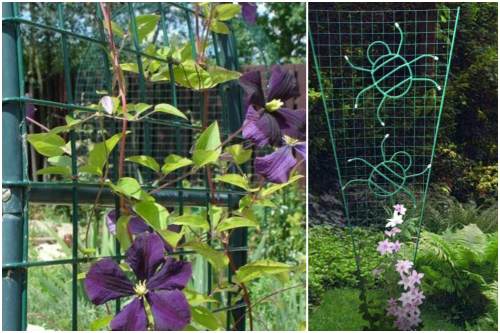

Rope support
It is made from plastic pipes, various cords or ropes, a bicycle wheel and wire hooks. The main advantage of this design: clematis is easy to prepare for winter. To do this, you only need to remove the ropes. Then you can immediately start preparing the plant.


Arch
It is made of a plastic pipe and a rope trellis. The pipe edges bent into an arc are installed on the reinforcement buried in the ground. Since people will move under the structure, it must be of a suitable size. The vault can be made in various shapes.
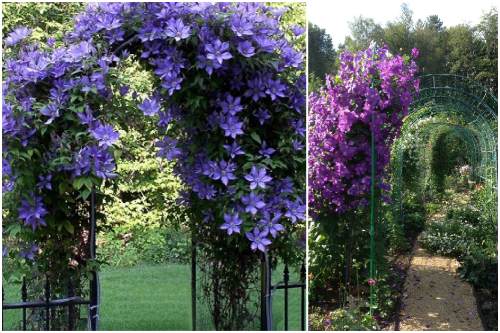

Material of construction
There are also no requirements for the material from which the support should be made. It can be any material. If you do not have the opportunity to purchase ready-made structures or new materials, you can get by with the tools at hand that you may have left after building a house or performing repair work. There are sure to be items in the shed that fit.
-May need wooden materials: various boards, bars and slats.
- Trunks and branches of large trees, willow twigs, bamboo are also suitable.
-Metal structures will serve for a very long time.
-The grids that you have left from the fence or from other structures, for example, a chain-link, are suitable for building a support.
-In addition, you can use a wire made of metal, a cord, a fishing line, a rope will also be needed to prepare support structures.
-Maybe old frames or doorways will come in handy.
-Some even use things like playpen parts, old rusty bicycles, wheels, scooters, and box springs.
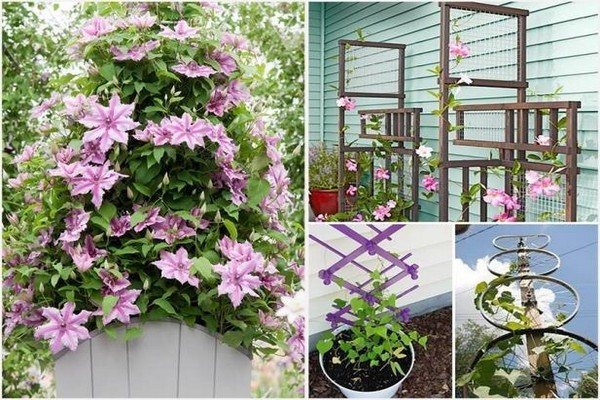

Secrets of growing clematis in containers
Small, large-flowered clematis (up to 1.2 m) are great for growing in containers and small gardens. Such clematis include varieties Picardy (simple lilac-red flowers with a bright red stripe and brown center), Fairy blue (double, lilac-blue flowers with a blue center) and others.
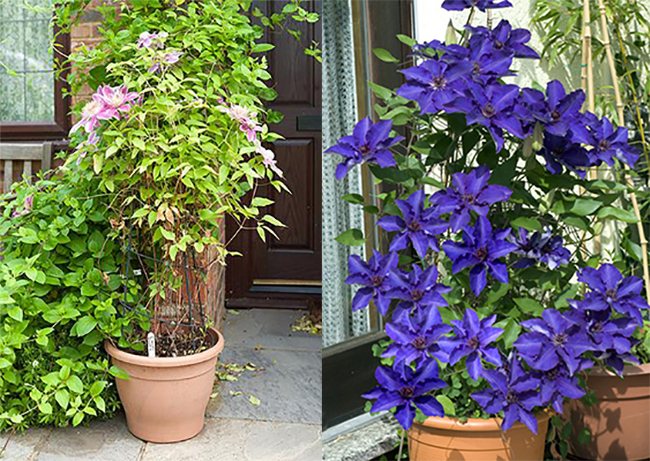

Design ideas
If you are going to independently create supports for clematis, you can show all your imagination and build a truly original structure. For example, a flat trellis made of wooden planks can be fixed directly to the facade of a building. In winter, he will not spoil the appearance of the building, and in the summer clematis will twine around it with their flexible shoots, turning the house into a real flower garden (Figure 3).
For those who prefer to use clematis as a decor for gazebos or recreation areas, arched metal structures are more suitable. They can be given any shape and size and installed in the place chosen for planting vines.


Figure 3. In creating supports, you can show limitless imagination
If you prefer to plant clematis in an open space and use them as a central element of a flower bed, you should give preference to pyramidal supports, which can also be made of wood, metal or PVC pipes. Regardless of the type of support chosen, it should be borne in mind that for normal weaving of shoots, the thickness of the structural elements should be no more than 2 cm.Otherwise, the shoots of the liana simply cannot fix on its surface. At the same time, the finished structure must be strong and stable in order to withstand both the weight of the vine itself and strong gusts of wind.
Friends-neighbors of clematis
When growing clematis, its roots need to be shaded; plants and flowers with shallow roots will help in this. For example, marigolds or calendula. Phlox, astilbe, irises and geranium will also look good next to it.
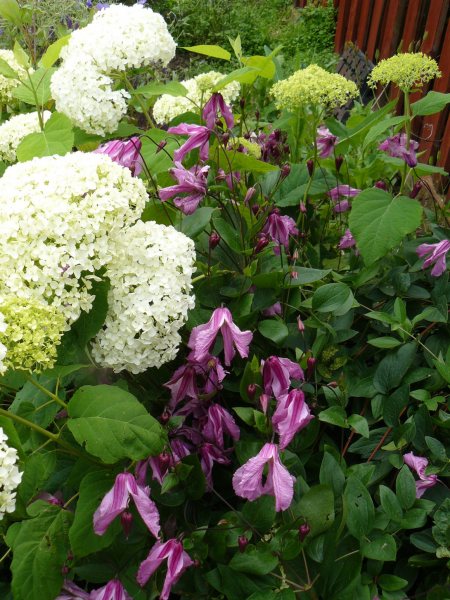

Vines will also be combined with flowers that bloom like them, for example, hydrangea or boudla. Grape-leaved or pungent clematis will make friends with fragrant acacia and barberry. Chubushnik and viburnum, jasmine and lilies, coniferous shrubs and grapes, ivy and peonies can also become a neighbor of a lush liana.
Clematis on a support: decoration of screens, pergolas and trellises
Most often, clematis are placed on pergolas, trellises, arches or screens. Before planting clematis, supports 1.5–2 m high are installed. The support must be sufficiently reliable, it can be made of both metal and wood, the main thing is that it provides support for the shoots. Such supports can be placed anywhere in the garden by planting one or more different varieties of clematis near them. When planting, it is better to use clematis from the same pruning group to facilitate their care.
